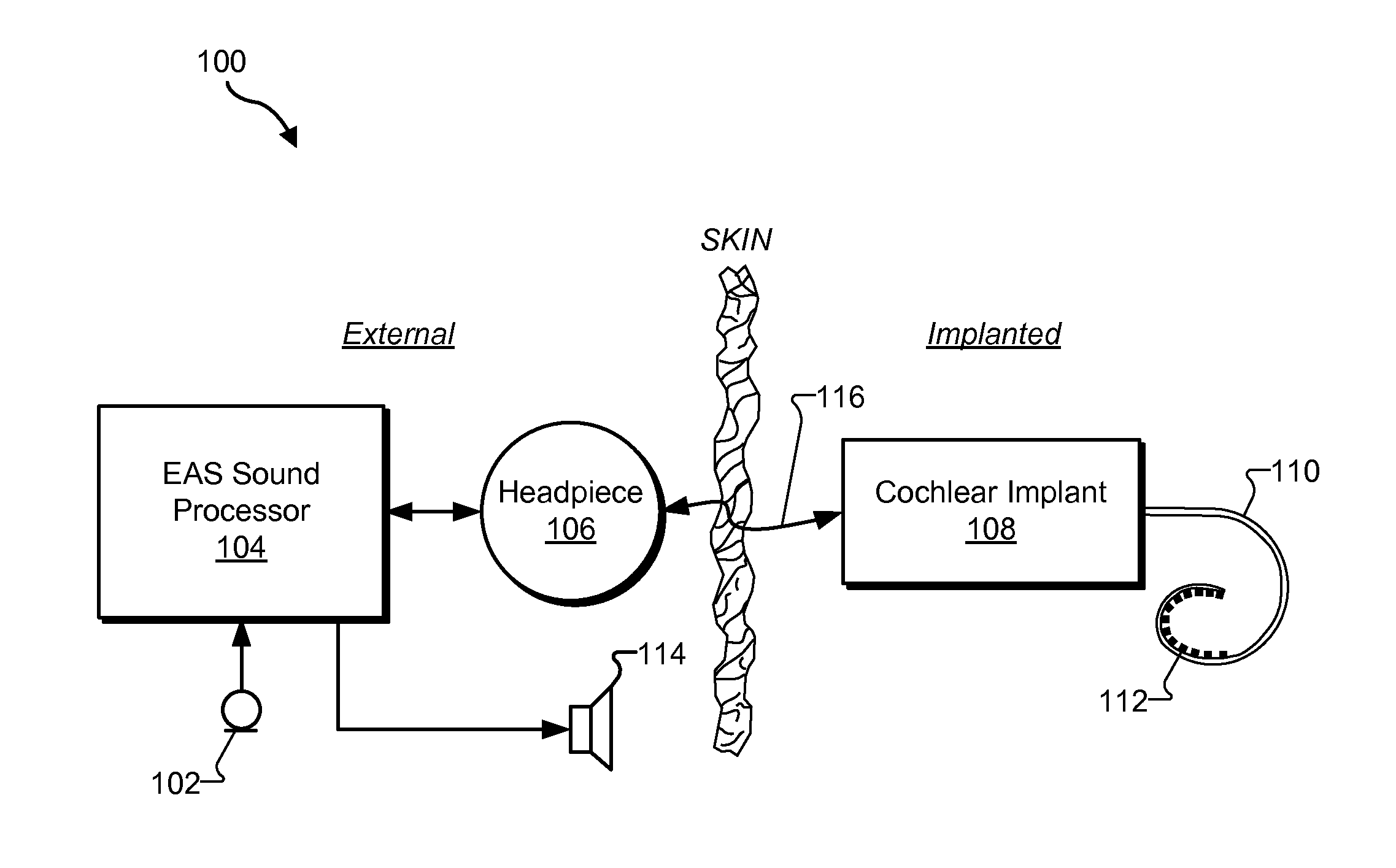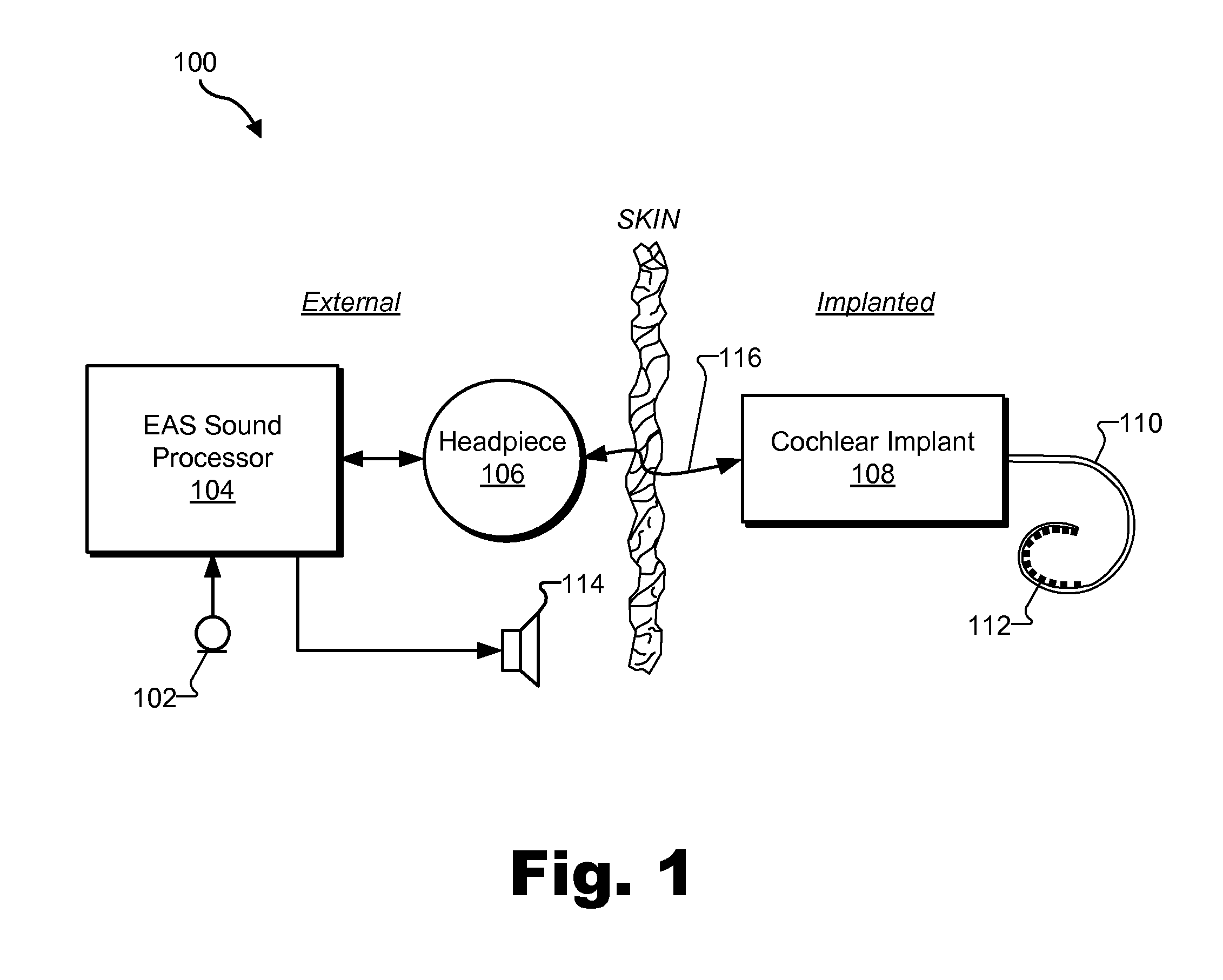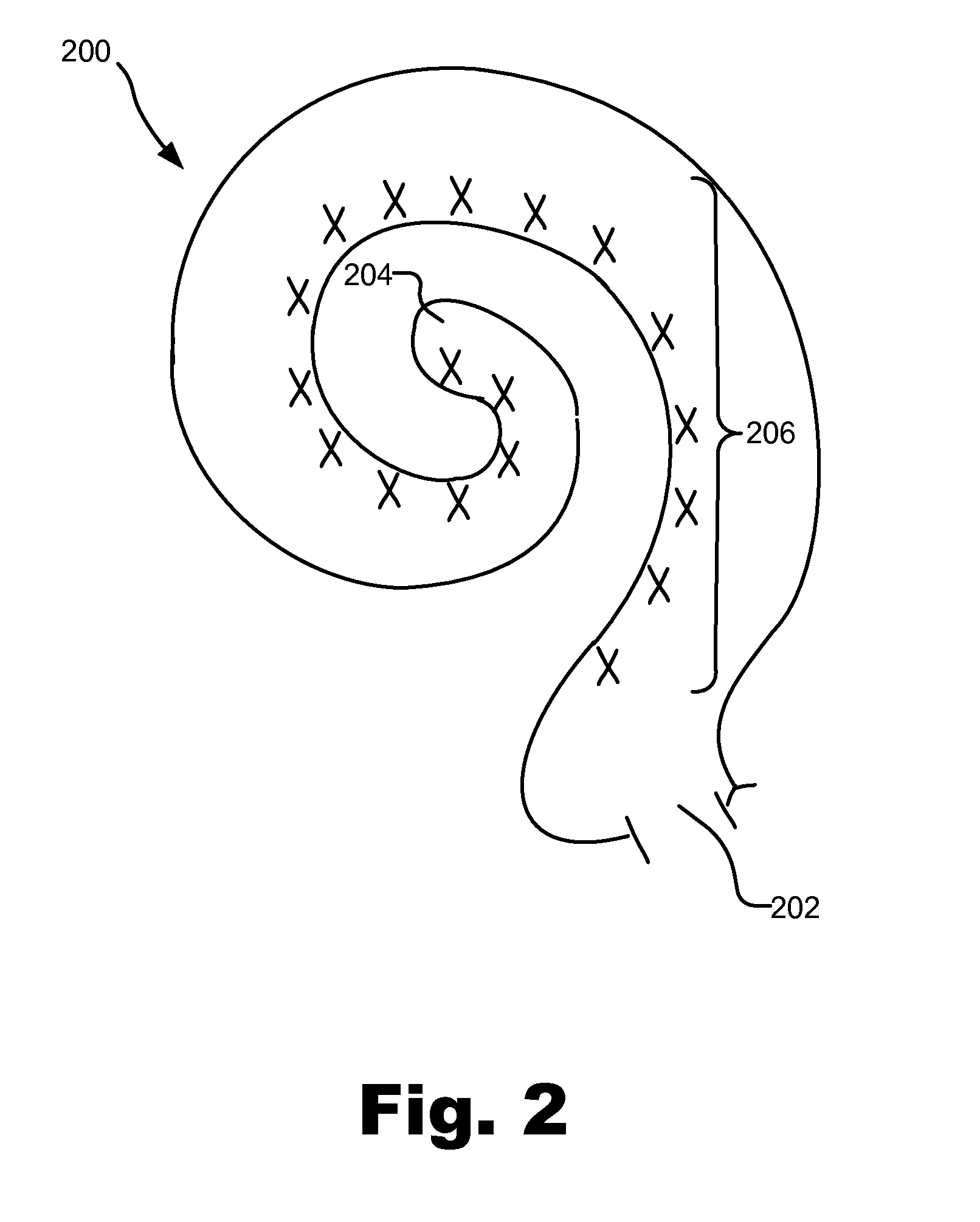Electro-acoustic stimulation systems that perform predetermined actions in accordance with evoked responses
a technology of acoustic stimulation and predetermined actions, applied in the field of electromechanical systems, can solve the problems of affecting the performance of the eas system, difficult or impossible to account, and people cannot benefit from traditional hearing aid amplification
- Summary
- Abstract
- Description
- Claims
- Application Information
AI Technical Summary
Benefits of technology
Problems solved by technology
Method used
Image
Examples
Embodiment Construction
[0016]EAS systems that elicit and record evoked responses (e.g., neural responses and / or cochlear responses) and perform predetermined actions in accordance with the evoked responses are described herein. As will be described below, an exemplary EAS system may include 1) an EAS sound processor configured to be located external to a patient, 2) a cochlear implant communicatively coupled to the EAS sound processor and configured to be implanted within the patient, 3) an electrode array communicatively coupled to the cochlear implant and configured to be located within a cochlea of the patient, and 4) a receiver communicatively coupled to the EAS sound processor and configured to be in communication with an ear of the patient. In some examples, the EAS sound processor directs at least one of the cochlear implant and the receiver to apply stimulation to the patient, records an evoked response that occurs in response to the stimulation, and performs a predetermined action in accordance w...
PUM
 Login to View More
Login to View More Abstract
Description
Claims
Application Information
 Login to View More
Login to View More - R&D
- Intellectual Property
- Life Sciences
- Materials
- Tech Scout
- Unparalleled Data Quality
- Higher Quality Content
- 60% Fewer Hallucinations
Browse by: Latest US Patents, China's latest patents, Technical Efficacy Thesaurus, Application Domain, Technology Topic, Popular Technical Reports.
© 2025 PatSnap. All rights reserved.Legal|Privacy policy|Modern Slavery Act Transparency Statement|Sitemap|About US| Contact US: help@patsnap.com



